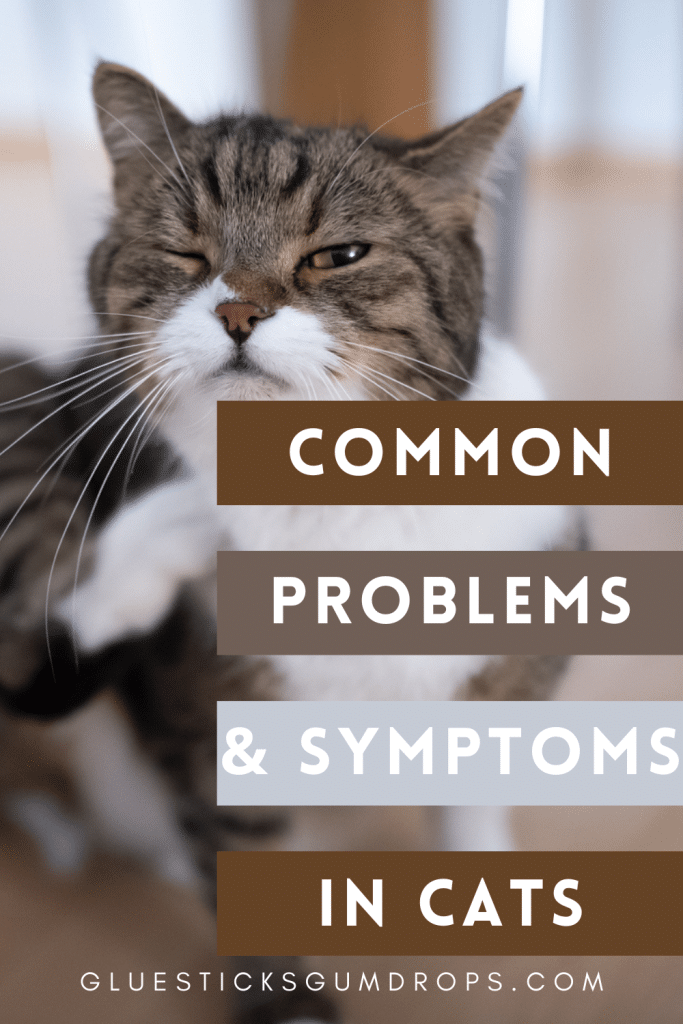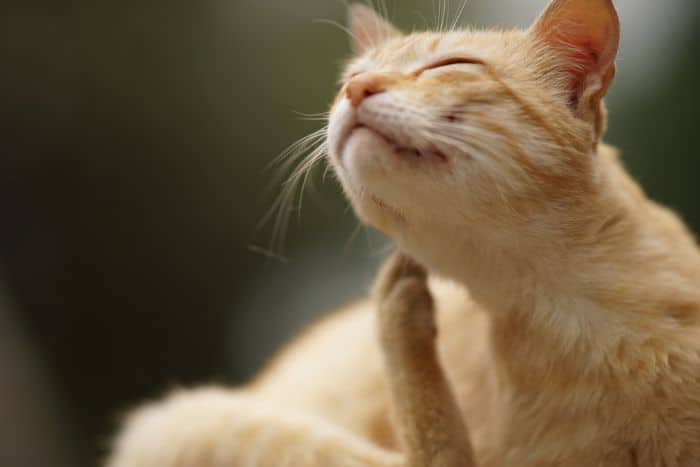Cats are animals who have evolved to disguise signs of illness. When a problem strikes, they become quiet and withdrawn, which prevents the owners from realizing that something is wrong. It is essential to seek veterinary help for your pet timely and take them for yearly wellness examinations twice a year.

Your cat can have an eye problem, diabetes, or might have contracted a virus. Cats are also the usual host for heartworms. When you recognize signs of common problems, you will be able to treat them well with the help of a veterinarian.
Read on to learn about the common problems and symptoms in cats.
1. Diabetes
When a cat cannot produce insulin, the sugar levels in her blood rise. This can cause hyperglycemia, which in turn can lead to serious conditions for your pet. If your cat experiences the following symptoms, it may be diabetic.
- Weight loss
- Sudden increase or decrease in appetite
- Increased urination and urination in places other than the litter box.
- Greater thirst
- Strange, sweet-smelling breath
- Lethargy
For most pets, insulin injections are required to regulate blood glucose levels. You may also be needed to perform glucose tests for your cat at home. But if the cat is seriously ill, it is essential to get them hospitalized.
2. Vomiting
Vomiting is another common health concern. It usually occurs when a cat eats something inedible or poisonous. Besides that, vomiting can also occur due to urinary tract disease or an infection. Here are some symptoms that your cat may experience.
- Abdominal heaving
- Drooling
- Weakness
- Lethargy
- Greater thirst
The treatment usually depends on the precise cause of vomiting. You must call your vet immediately. Some other things you can do is to get your cat treated for fleas, as they can cause intestinal parasites. Also, feed your cats with meals that adequately fulfill their nutritional needs. Feed them small quantities of food that they can easily digest.
3. Eye Problem
Did you find your cat squinting one eye? It’s a sign of a serious eye problem & according to Cat Food Point the causes can be inflammation of the eyelid, conjunctivitis, or corneal ulcers but determining the right cause needs a veterinary exam. It can be because of the following medical conditions:
- Blepharitis: It is the inflammation of the eyelid. This problem is prevalent in Persian, Himalayan, and Burmese cats.
- Conjunctivitis or the ‘pink eye’: This problem can be because of being exposed to irritants or due to a viral or bacterial infection.
- Corneal ulcers: These are linked to eye injuries and dry eyes. They require immediate treatment because, if left undiagnosed, it can cause vision impairment.
- Cataract: Cataracts or the milky clouding of the lens is responsible for focusing light, which usually happens with Himalayan or Burmese cats. In cats of other breeds, the causes can be old age, trauma, lens dislocation, or a metabolic disorder.
The correct treatment is based on the treatment that the veterinarian prescribes after diagnosis.
4. Respiratory Infections
The throat, nose, and sinus areas of the cat is hugely susceptible to viral and bacterial infections. They can be transmitted from one cat to another through coughing, sneezing, and sharing food and water bowls. Some common symptoms of respiratory infections include the following:
- Congestion
- Runny nose
- Cough
- Sneezing
- Drooling
- Fever
- Open mouth breathing
- Rapid breathing
The best treatment courses for upper respiratory infections are medication, proper rest, and nutritional and fluid support.

5. Fleas
Flea bites are itchy and can cause allergies in cats. They can also provide an environment for specific worms of tapeworms to thrive. However, cat fleas are quite normal and easily treatable. Some symptoms of this health problem include
- Flea dirt on the cat’s skin.
- Continuous scratching
- Irritated or red skin
- Frequent licking
- Skin infections
- Hair loss
There are several treatment options for cat fleas. These include topical or oral medication, foams, and powders. However, it’s essential to speak to your vet about the option that is suitable for your cat. At the same time, you can take certain preventive measures to minimize the likelihood of your cat experiencing fleas. These include keeping your pet inside, keeping your home environment clean, and regularly washing your cat’s bedding.
Concluding Words
As a cat owner, it’s essential to identify the symptoms of common illnesses to seek timely veterinary help. Recognizing the signs earlier on will lower the chances of your pet experiencing a serious health issue. As always, call your veterinarian if you notice your cat experiencing any alarming symptoms.
